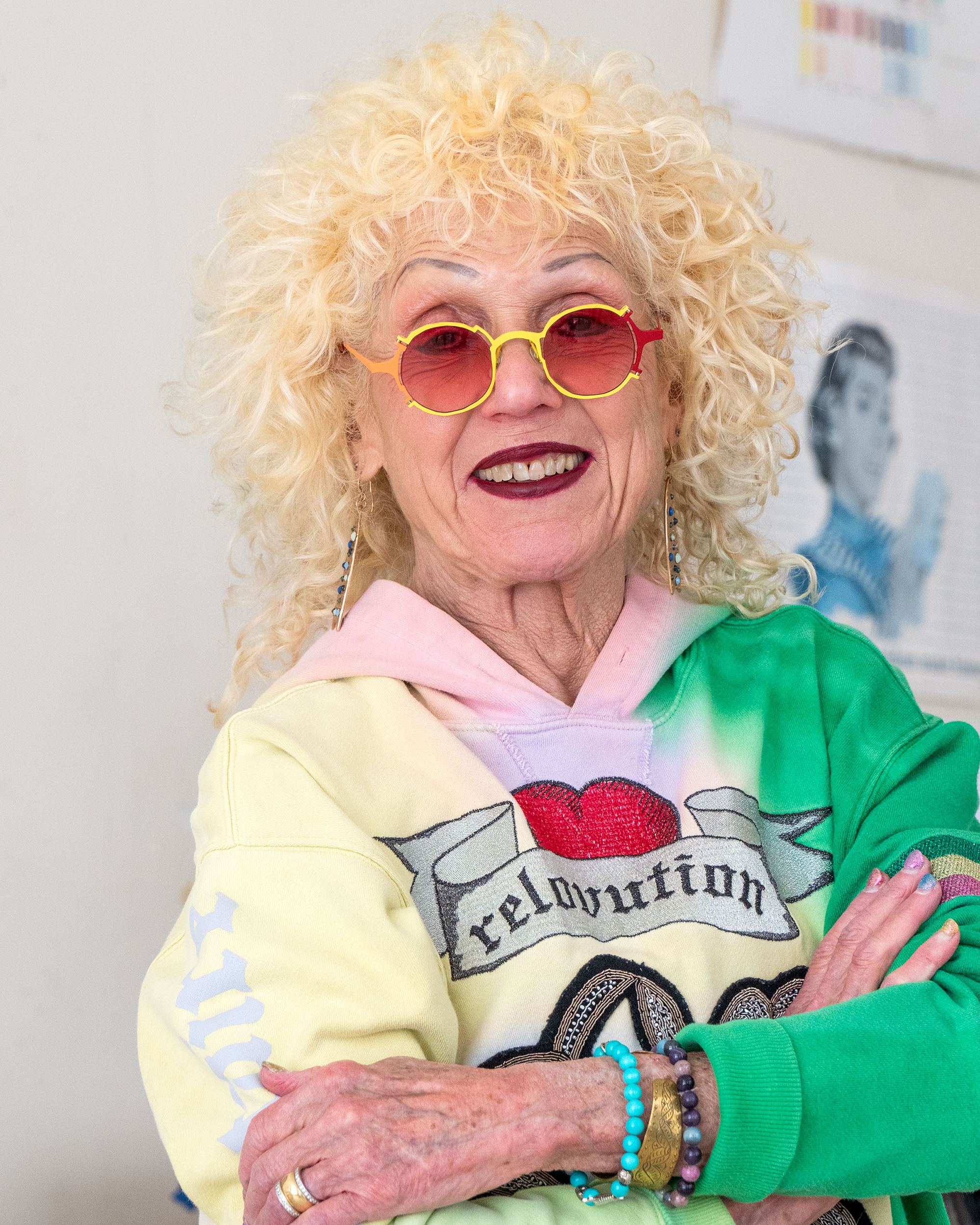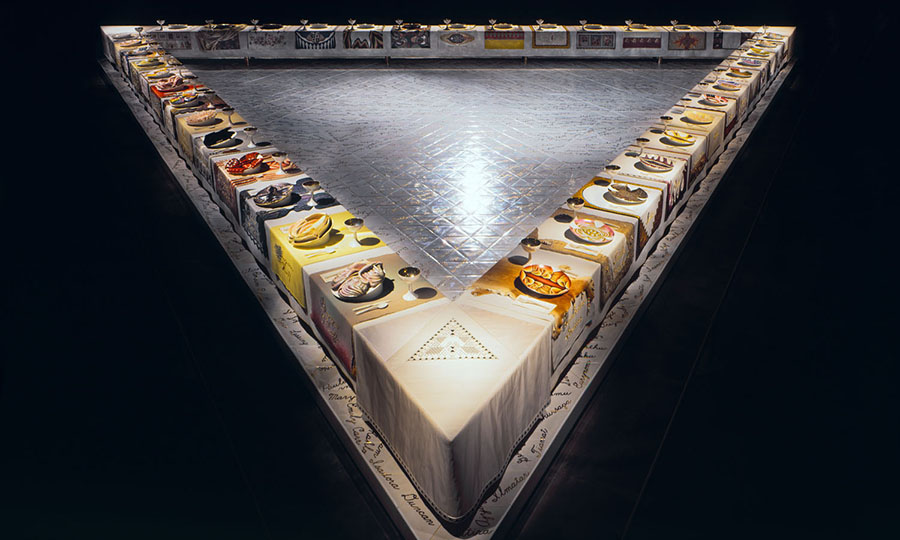Beginning in 1974 until 1979, Judy Chicago created a monumental feminist exhibit titled The Dinner Party. Chicago herself was a pioneer feminist in America who notably changed her last name to Chicago to create her own identity, separate from her deceased father and husband's names. Her work was influential in the 1970s feminist movements and The Dinner Party struck great attention and conversation.

The Dinner Party is an installation type of art that is currently displayed in the Brooklyn Museum in New York. The piece is a large triangular shaped table that stretches almost 50 ft on each side, and holds 39 place settings and plates dedicated to notable women in history. Each spot includes ceramic silverware, a gold chalice, gold embroidered name place mats, and most notably intricate plates painted or sculptured in vulvar or butterfly forms and shapes.


Chicago’s motivation for this art piece came mostly from extrinsic values. She believed that it was important to bring attention to women who have often been excluded in history. She explored feminism in this work in many ways through the construction and result. This piece was designed in a way to resemble balance and equality as a way of empowerment for women through the triangle table structure. It also was created with many craft and art techniques that were generally seen as for women, such as sewing, as opposed to other fine arts that were often male dominated. The final piece was supposed to be feminist in the way that it brought attention to women’s work and women’s bodies that were suppressed in history. The depiction of vulva shapes on each plate reclaims the idea of women’s bodies and sexuality.
Rick Rubin discusses the idea of cooperation in The Creative Act: A Way of Being that could be compared to the dialogue of criticism that The Dinner Party received. He suggests that cooperation is important when creating art because it brings together new ideas and helps find the best outcome. While the critics of Chicago’s installation aren’t necessarily working with her to create the final result, their response is cooperating to fight for true feminism together. Many critics believed Chicago minimized the true impact these women had and simply painted vaginas on plates vulgarly, and disrespected notable women while claiming to empower. But, as Rubin discusses healthy tension, this discord between creator, and in this case critic, can help find deeper meaning in the work and shape feminism 40 years later. Some people will love Chicago’s work and some people will hate it, but because people have the ability to critique and collaborate, it expands feminist art and creates the opportunity for productive conversation around it.
I love this artwork! I like that you mentioned the use of craft techniques in making the piece, because it is another layer to the feminist nature of the artwork that some people might not notice. Also your discussion of critics thinking the piece was vulgar and disrespected the women involved just speaks to the patriarchy in the art world. Men are allowed to paint eroticized female nudes from the male gaze, but a woman representing female anatomy is the one criticized for being vulgar.
ReplyDelete